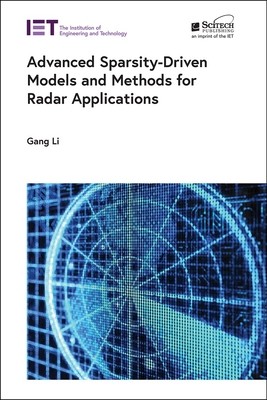
- We will send in 10–14 business days.
- Author: Gang Li
- Publisher: SciTech Publishing
- ISBN-10: 1839530758
- ISBN-13: 9781839530753
- Format: 16.3 x 23.9 x 1.8 cm, kieti viršeliai
- Language: English
- SAVE -10% with code: EXTRA
Advanced Sparsity-Driven Models and Methods for Radar Applications (e-book) (used book) | bookbook.eu
Reviews
Description
This book introduces advanced sparsity-driven models and methods and their applications in radar tasks such as detection, imaging and classification. Compressed sensing (CS) is one of the most active topics in the signal processing area. By exploiting and promoting the sparsity of the signals of interest, CS offers a new framework for reducing data without compromising the performance of signal recovery, or for enhancing resolution without increasing measurements.
An introductory chapter outlines the fundamentals of sparse signal recovery. The following topics are then systematically and comprehensively addressed: hybrid greedy pursuit algorithms for enhancing radar imaging quality; two-level block sparsity model for multi-channel radar signals; parametric sparse representation for radar imaging with model uncertainty; Poisson-disk sampling for high-resolution and wide-swath SAR imaging; when advanced sparse models meet coarsely quantized radar data; sparsity-aware micro-Doppler analysis for radar target classification; and distributed detection of sparse signals in radar networks via locally most powerful test. Finally, a concluding chapter summarises key points from the preceding chapters and offers concise perspectives.
The book focuses on how to apply the CS-based models and algorithms to solve practical problems in radar, for the radar and signal processing research communities.
EXTRA 10 % discount with code: EXTRA
The promotion ends in 23d.14:23:31
The discount code is valid when purchasing from 10 €. Discounts do not stack.
- Author: Gang Li
- Publisher: SciTech Publishing
- ISBN-10: 1839530758
- ISBN-13: 9781839530753
- Format: 16.3 x 23.9 x 1.8 cm, kieti viršeliai
- Language: English English
This book introduces advanced sparsity-driven models and methods and their applications in radar tasks such as detection, imaging and classification. Compressed sensing (CS) is one of the most active topics in the signal processing area. By exploiting and promoting the sparsity of the signals of interest, CS offers a new framework for reducing data without compromising the performance of signal recovery, or for enhancing resolution without increasing measurements.
An introductory chapter outlines the fundamentals of sparse signal recovery. The following topics are then systematically and comprehensively addressed: hybrid greedy pursuit algorithms for enhancing radar imaging quality; two-level block sparsity model for multi-channel radar signals; parametric sparse representation for radar imaging with model uncertainty; Poisson-disk sampling for high-resolution and wide-swath SAR imaging; when advanced sparse models meet coarsely quantized radar data; sparsity-aware micro-Doppler analysis for radar target classification; and distributed detection of sparse signals in radar networks via locally most powerful test. Finally, a concluding chapter summarises key points from the preceding chapters and offers concise perspectives.
The book focuses on how to apply the CS-based models and algorithms to solve practical problems in radar, for the radar and signal processing research communities.


Reviews